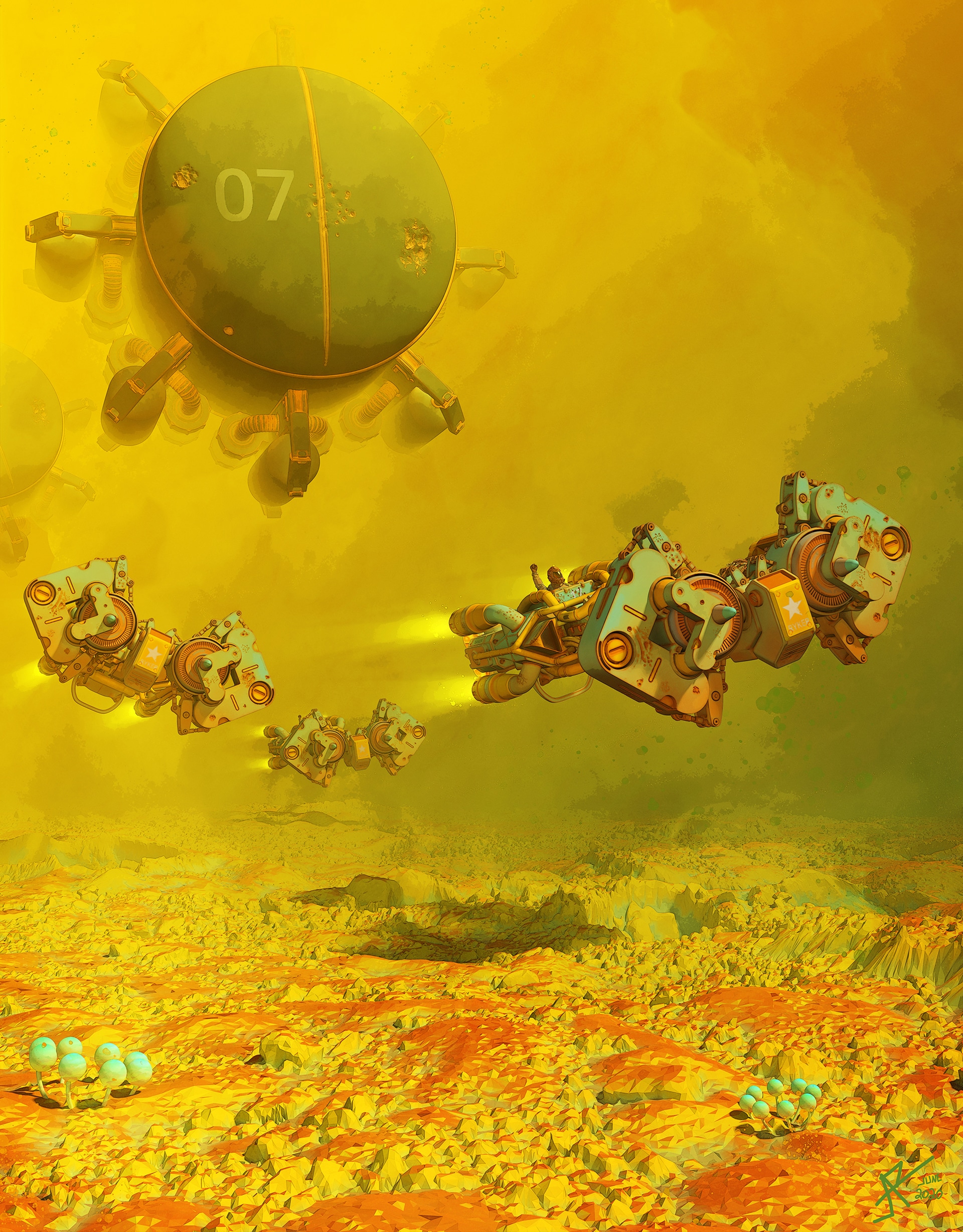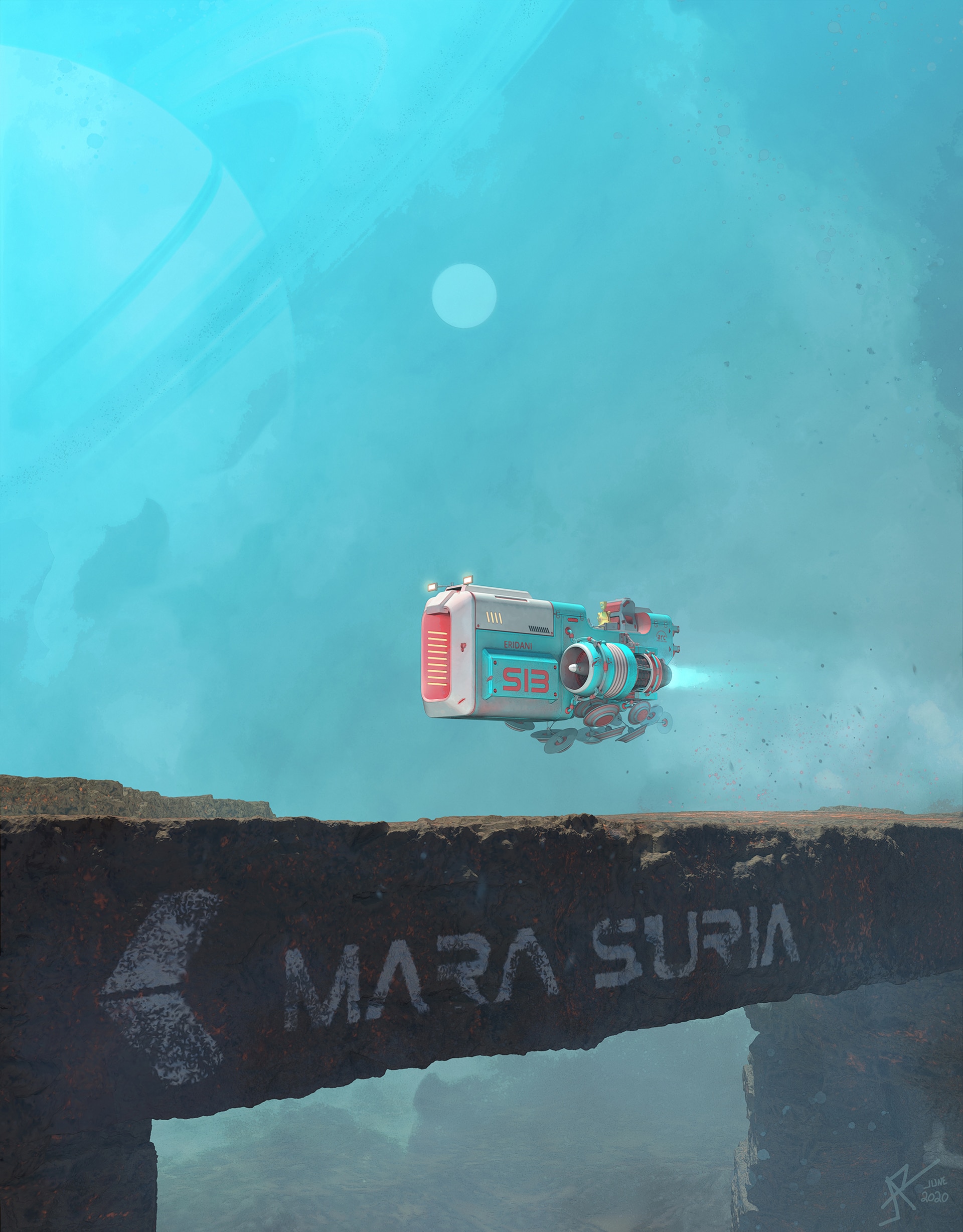When the unexpected happens, you should expect the unexpected. After completing art school, Jarlan Perez started a career. When it unexpectedly ended, he worked across an array of other fields developing creative and adding to his skillset. Through it all, he honed his experience as a designer and a storyteller. Then, unexpectedly, came back to his passion for immersive art as a Visual Designer at Google. Here, we learn more about his process and why KeyShot is such an important tool in his workflow.
What sparked your interest in Game Art/ Design and led to your role in UX and visual design at Google?
I was always into the arts as a kid even though I had no idea what being a creative actually meant at the time. I just knew that I enjoyed breaking things apart and making something new out of it. We didn’t live in the best of neighborhoods so I spent much of my time inside doing random arts and crafts and playing games. Video games served as an escape for me. Somewhere I could go to be immersed in a story of magic, wonder, and hope.
 I remember being twelve or thirteen and playing Metal Gear Solid from sun up to sun down for who knows how long. I must’ve beat that game like 30 times. It was the first time I experienced a game that combined cinematic storytelling with gameplay and I couldn’t get enough of it. I think that’s the point in time where my interest began in games as a medium for immersive stories.
I remember being twelve or thirteen and playing Metal Gear Solid from sun up to sun down for who knows how long. I must’ve beat that game like 30 times. It was the first time I experienced a game that combined cinematic storytelling with gameplay and I couldn’t get enough of it. I think that’s the point in time where my interest began in games as a medium for immersive stories.
As the years went on, I became more and more interested in the idea of creating games or game-like experiences. During my last few years of high school, I didn’t feel challenged or encouraged to pursue a career that I would enjoy or thrive in. I ended up skipping a lot, usually coming in on test days or days where I was able to take one of the art classes from the very limited catalog. Much of what I was interested in learning was not being taught. So I just stayed home and studied what I wanted.
In 2010, I completed art school after four years and quickly jumped into work at a small TV studio. I was freelancing on the side to build up my experience and make a little extra money. A couple of friends and I even started our own indie endeavor and we released one game together.
What was the turning point in your career?
After about a year of working at a small TV studio, I was let go on New Year’s Day with no notice or explanation other than, “sorry, we can’t afford you,” even though I wasn’t making much. During that time, I tried to pick any freelance gig I could to make ends meet. Where I lived, there wasn’t much opportunity for design work. It wasn’t known for that but I couldn’t see myself doing anything else. I designed t-shirts, built websites, created models for indie studios, worked with large format printing, and vinyl wrapped business vehicles and food trucks. I learned a lot during that time and was able to add those skills to my toolbox.
Ten months later, I started working at Lockheed Martin as a design engineer where I was able to work on a wide array of terrestrial, aeronautical, and naval projects. I began honing in on my interest in hard surface design. While there, I was able to work on jet engines, support vehicles, super-fast aircraft, and even the presidential helicopter. In 2017, I was invited to Google to be part of a two-week artist in residence design project. I fell in love with the company culture, their approach to design, and the problems that the team was working to solve. A year later, I moved to New York and joined the team full time as a UX and visual designer.
What is unique about your approach to a project/design?
This one is a little tough as I feel design principles are borrowed and evolved over time. The way I use color, for example, is built on the foundations of the masters of our industry, particularly John Harris and Chris Foss. I take the time to learn and understand everything I can about what I am designing before jumping in. I like to use my time in a way that is efficient, effective, and serves as a conduit to well-informed design decisions.
What is your primary 3D modeling software?
At the moment I use 3ds Max for the majority of my modeling. I also jump into ZBrush for detailing and shape exploration. I do not have any strong reasons as to why. I learned the software early on and feel very comfortable using it. I do not have to think too much as to how to go about something. I just jump in and do it. There are other great modeling packages that offer a more versatile and updated toolset that I would eventually like to try.
Where in the process do you use KeyShot?
I’ve only recently started using KeyShot in my 3D illustration work, after being introduced to the ZBRush to Keyshot Bridge, and I’m very excited to continue that exploration. If I were to break down my process for creating 3D illustrations into phases it would look something like this:
Phase one – Explore / Define
For my space illustrations, I’ve been modeling things out in 3ds Max.

Phase two – Detail / Texture
Then I bring it all into ZBrush for detailing and painting.

Phase three – Lighting / Rendering
Using the KeyShot bridge, I import in my assets directly from ZBrush (I can’t underscore enough how incredible this is!) and set up my scene, lighting, materials, and camera angles.

Phase four – Composition / Output
Next, I render everything to render layers and bring them all into photoshop to compose.

Phase five – Paint / Detail
Finally, I paint the rest in and add any little details.

KeyShot falls under phases three and four. The process can vary depending on the output of the work. Designing for a 3D illustration is different from creating a real-time game asset in the later phases but there is a good amount of overlap in phases one and two. For an illustration, I get to skip a lot of production steps like unwrapping, poly budgets, and texture limitations. I can keep things messy and fun.
What makes KeyShot an important tool to have?
As a designer, quality, efficiency, and iteration are incredibly important to the work we do. We go through hundreds of changes and feedback rounds throughout the design phase of a product. KeyShot allows us to have a pipeline where we can quickly provide renders from all angles and in different contexts to help us gather that feedback faster. As an artist, I want a tool that is flexible to my needs. I like to play around and try all sorts of things, usually unintended. I love how easy the KeyShot bridge lets me pull in everything from zBrush, Polypaint, and all. That alone lets me skip so many production steps and keep focused on the art. For my work, both professionally and personally, KeyShot helps me attain high-quality results and saves time in the process.
What advice would you give to someone interested in doing what you do?
What has helped me throughout the years is a willingness to put myself in situations that allow me to expand my skill set. I like to be in a room where I am not the most experienced person on a particular subject. That can be scary for some but take it as an opportunity to learn and grow while offering your skills to the team to mutually build each other up. Use uncertainty and ambiguity as a vehicle to push yourself into new heights, not tear yourself down. Having worked with a wide array of incredible talent I can tell you that the majority of artists/designers have at one point or another faced imposter syndrome. It happens and that’s ok. Take a step back and remember why you love to do what you do. In this industry, you have to be willing to change and adapt if you’re playing the long term game. Always challenge yourself to try something new and stay hungry for knowledge not just in your professional life but outside of it as well.
JARLAN PEREZ
More at artstation.com/jarlanperez





